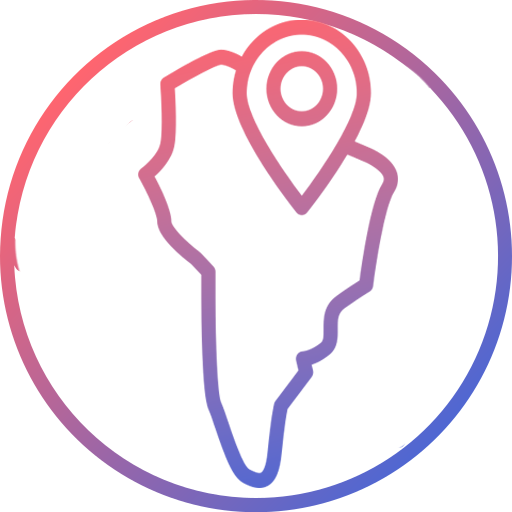Frequently Asked Questions
How Can I Maximize Data Efficiency When Using Multiple eSIM Profiles?
Discover strategies to maximize data efficiency when managing multiple eSIM profiles, ensuring seamless connectivity and cost-effective usage during travel.
Managing multiple eSIM profiles can lead to improved connectivity and flexibility while traveling, but it’s crucial to use your data efficiently to avoid unnecessary costs. By optimizing your device settings, monitoring usage, and leveraging Wi-Fi, you can make the most of your eSIM plans while maintaining seamless connectivity.
Here’s a guide to maximizing data efficiency when using multiple eSIM profiles.
1. Monitor Data Usage Across Profiles
Tracking data usage for each profile helps you identify high-consumption activities and manage your plans effectively.
Tips:
- Use your device’s settings to monitor data for individual profiles:
- iOS: Navigate to Settings > Cellular > Cellular Data Usage.
- Android: Go to Settings > Connections > Data Usage.
- Review detailed usage reports in your eSIM provider’s app.
- Set alerts for data limits to avoid overages.
Example: A traveler monitored their work eSIM profile to ensure they didn’t exceed their data allowance during a month-long trip.
2. Leverage Wi-Fi for Data-Intensive Tasks
Using Wi-Fi for activities like streaming, downloads, or video calls reduces reliance on mobile data.
Tips:
- Connect to secure Wi-Fi networks in hotels, cafes, or airports whenever possible.
- Use a VPN for secure browsing on public Wi-Fi.
- Schedule data-heavy tasks for times when you have Wi-Fi access.
Example: A business traveler used hotel Wi-Fi for video conferences while reserving their eSIM data for navigation and emails.
3. Enable Data-Saving Features
Most smartphones have built-in features to reduce data consumption.
Steps to Enable Data-Saving Modes:
- iOS: Go to Settings > Cellular > Cellular Data Options > Low Data Mode.
- Android: Navigate to Settings > Connections > Data Saver.
- Disable background data for apps that don’t require constant updates.
Example: A tourist reduced data usage by enabling Low Data Mode and turning off auto-refresh for social media apps.
4. Switch Between Profiles Based on Data Needs
Using the right eSIM profile for specific tasks ensures you utilize your plans efficiently.
Tips:
- Assign a high-data profile for activities like streaming or online gaming.
- Use a local or smaller data profile for light tasks like messaging or browsing.
- Switch profiles manually depending on network strength and data availability:
- iOS: Navigate to Settings > Cellular > Cellular Plans and select the profile.
- Android: Go to Settings > Connections > SIM Card Manager.
Example: A digital nomad used a global eSIM for work-related data and switched to a local profile for leisure activities.
5. Optimize Streaming and Downloads
Streaming and downloading are among the most data-intensive activities, but simple adjustments can help conserve data.
Tips:
- Lower video quality settings on streaming platforms like Netflix or YouTube.
- Download content like music or movies over Wi-Fi for offline use.
- Turn off auto-play features on social media apps.
Example: A traveler set their streaming apps to standard definition to stretch their data plan during a long trip.
6. Disable Automatic Updates and Syncing
Automatic updates and background syncing can consume significant amounts of data.
Steps to Disable Automatic Updates:
- iOS: Go to Settings > App Store > App Updates and toggle off updates.
- Android: Navigate to Settings > Software Update and disable automatic downloads.
- Turn off auto-sync for cloud storage apps and email.
Example: A tourist disabled auto-sync for photos and videos to avoid large data transfers during a trip.
7. Use Apps with Offline Modes
Many apps offer offline functionality, reducing your need for mobile data.
Tips:
- Download maps for offline navigation using Google Maps or similar apps.
- Save travel itineraries and tickets offline to avoid constant downloads.
- Use note-taking apps that work without an internet connection.
Example: A backpacker saved offline maps for navigation, minimizing their reliance on mobile data in remote areas.
8. Top-Up Data Plans Strategically
If you need additional data, choose top-ups that align with your usage patterns.
Tips:
- Opt for smaller, incremental top-ups if your needs are temporary.
- Upgrade to a larger plan if your usage consistently exceeds limits.
- Check if unused data rolls over to the next cycle to maximize value.
Example: A business traveler purchased a 5GB top-up mid-trip to cover unexpected video calls.
Conclusion
Maximizing data efficiency when using multiple eSIM profiles is essential for cost-effective and seamless connectivity. By monitoring usage, leveraging Wi-Fi, and optimizing device settings, you can stretch your data allowance and stay connected wherever you go.
Unoroam’s flexible eSIM plans and user-friendly tools make it easy to manage data efficiently, ensuring reliable service for travelers of all types.
"Looking for a reliable eSIM plan to maximize your data efficiency? Use our booking widget below to select a plan tailored to your destination, duration, and connectivity needs. Stay connected effortlessly during your travels!"
Create new eSIM
Popular Destinations

Europe
Switzerland
